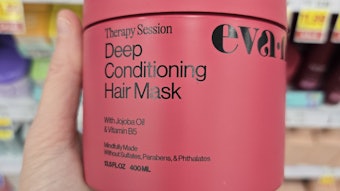See the full article in the November 2013 edition.
Conventional daily use hair care products are predominantly based on relatively large molecules such as surfactants, polymers and oils. However, the size of these molecules suggests a limited ability for penetration, and their efficacy is therefore restricted solely to the hair surface. In short, conditioning and styling ingredients are deposited at the surface and subsequently removed by the surfactants in shampoos. However, there may be a next generation of products that can be developed and will manipulate the internal properties of hair—and presumably, these products must revolve around smaller molecules that are better able to penetrate.
This article describes results from three test methods that measure properties relating specifically to the internal structure of hair. In each case, the treatment of hair with glycolic acid (see Figure 1) brings about significant changes in the bulk properties of hair. Note that unless otherwise specified, the work described here was performed using 5% solutions of a commercially-available cosmetic grade glycolic acida.
Tensile Properties
The remarkable strength of human hair is a consequence of its highly complex structure; accordingly, its mechanical properties can serve as a probe to investigate structural changes. For example, the decrease in tensile strength that accompanies chemical treatments, i.e., perms, coloring or bleaching, indicates the hair has been permanently altered via a depletion in strength-supporting cystine bonds within its internal cortical structure. It is, therefore, well-recognized that the tensile properties are dominated by the internal hair structure, with practically no contribution from the outer cuticle layer.2










